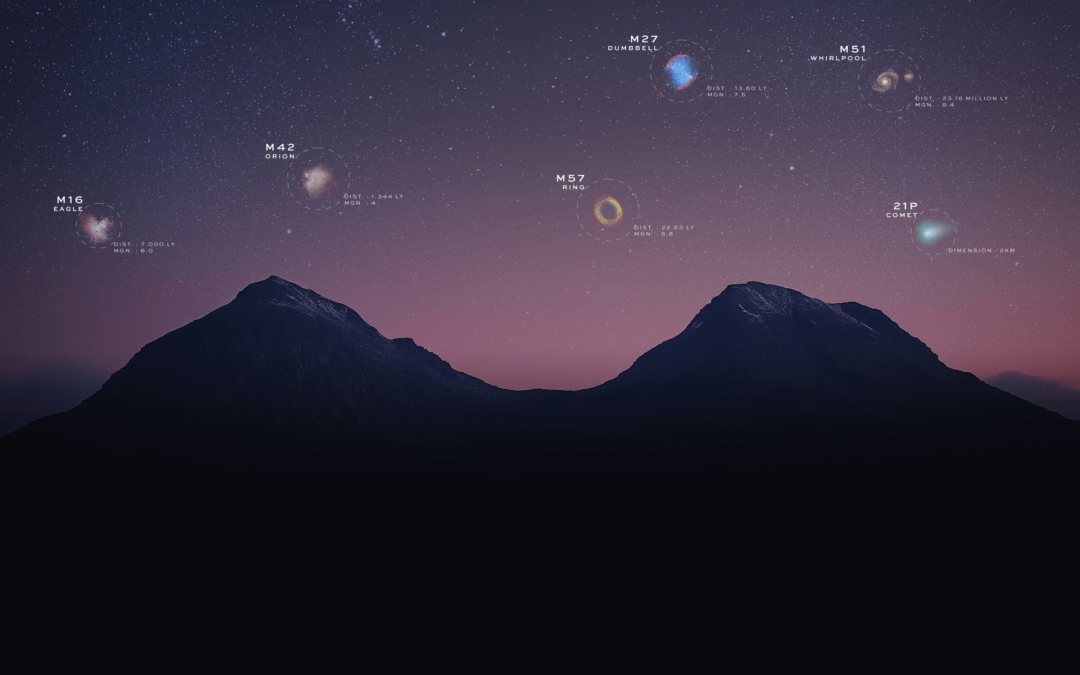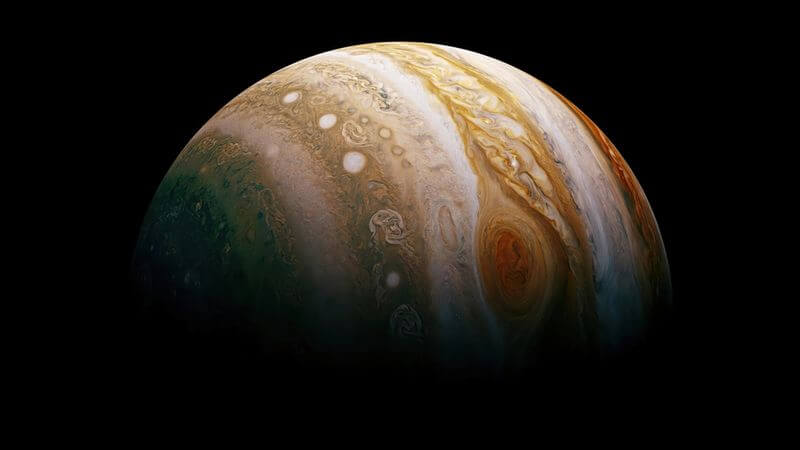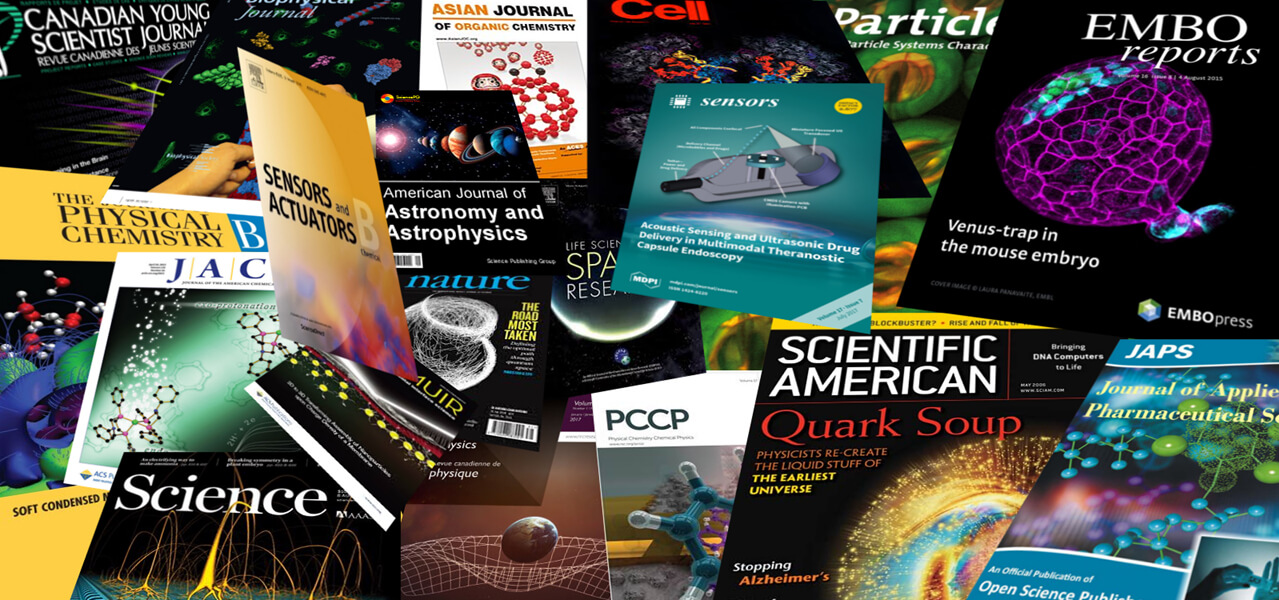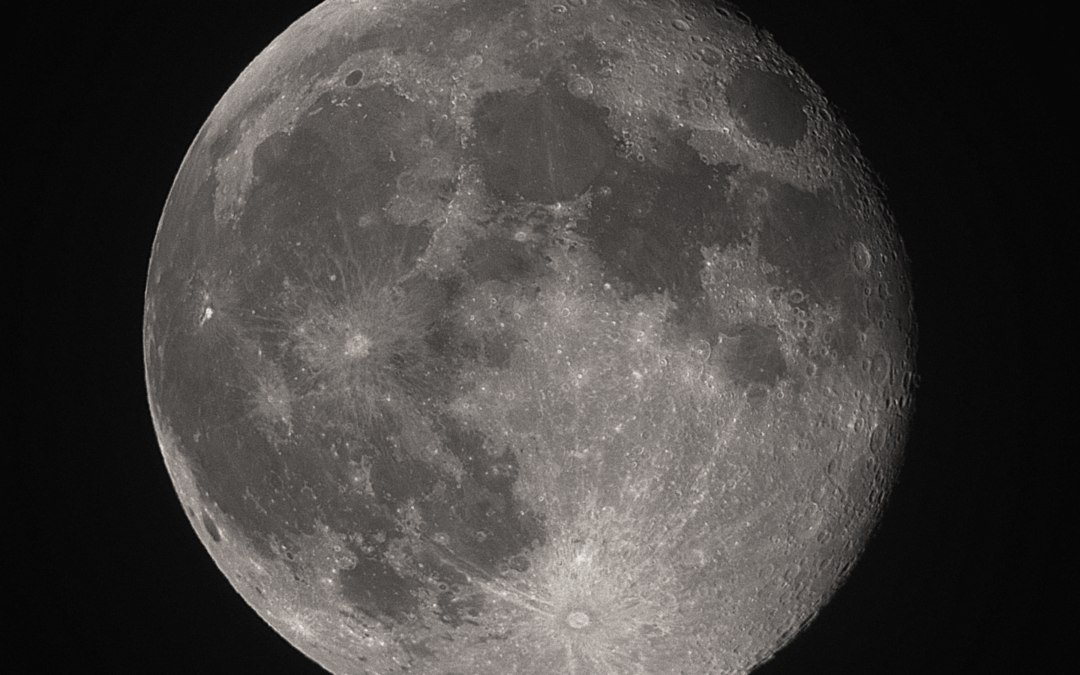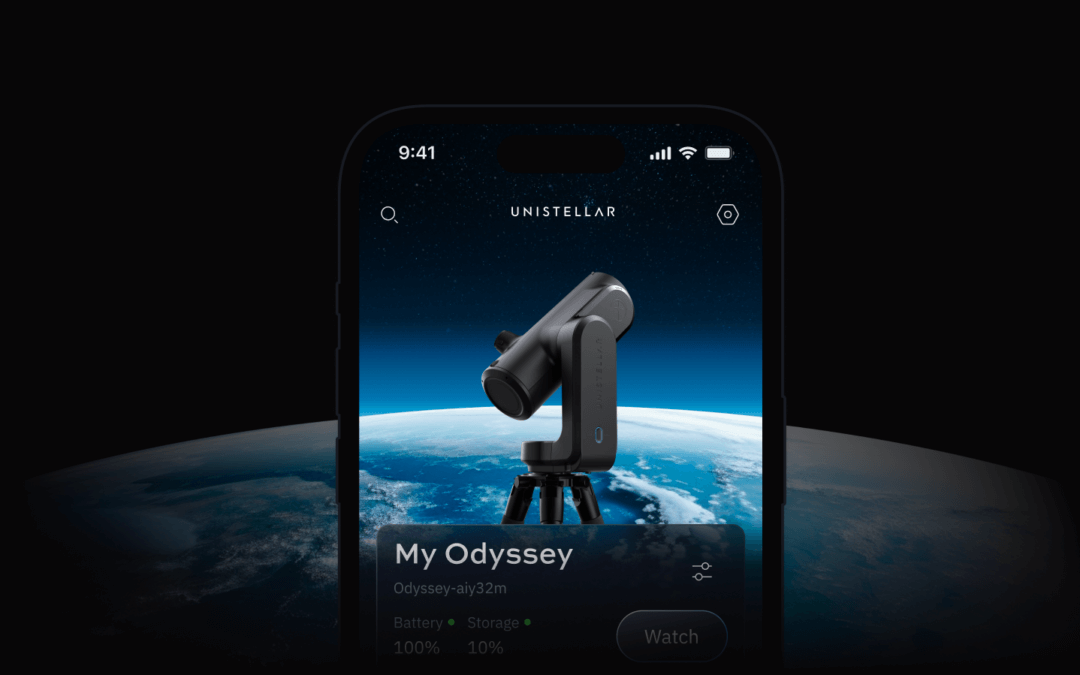For our latest citizen science campaign, we have three for the price of one! This comes thanks to a rare triple asteroid system orbiting near Earth: 2001 SN263. Catch the trinary asteroid system in the night sky now through March 31!
2001 SN263 was first discovered in 2001 by the Lincoln Near-Earth Asteroid Research (LINEAR) project, though the systems’ two smaller satellites weren’t found until 2008. The cluster consists of a main carbonaceous asteroid that’s about 1.6 miles (2.6 km) in diameter, or about as long as the National Mall in Washington, D.C., and two smaller objects caught by its gravity. The two moons, named Beta and Gamma, are about half a mile and a quarter of a mile long (800 m and 400 m), respectively.
2001 SN263 was actually considered a potentially hazardous asteroid, one that could hit Earth, until 2017. Though it’s no longer considered dangerous, the system still makes for a tempting observation target. The Brazilian ASTER mission will set out to explore 2001 SN263 probably in 2025.
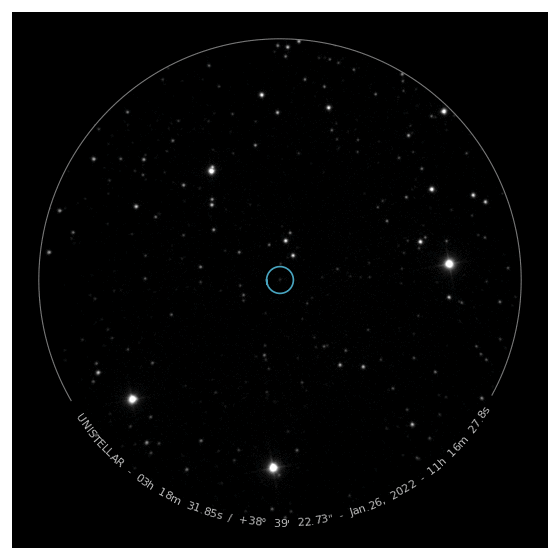
Animation of Unistellar Ambassador Tateki Goto’s observation of 2001 SN263 on January 26, 2022.
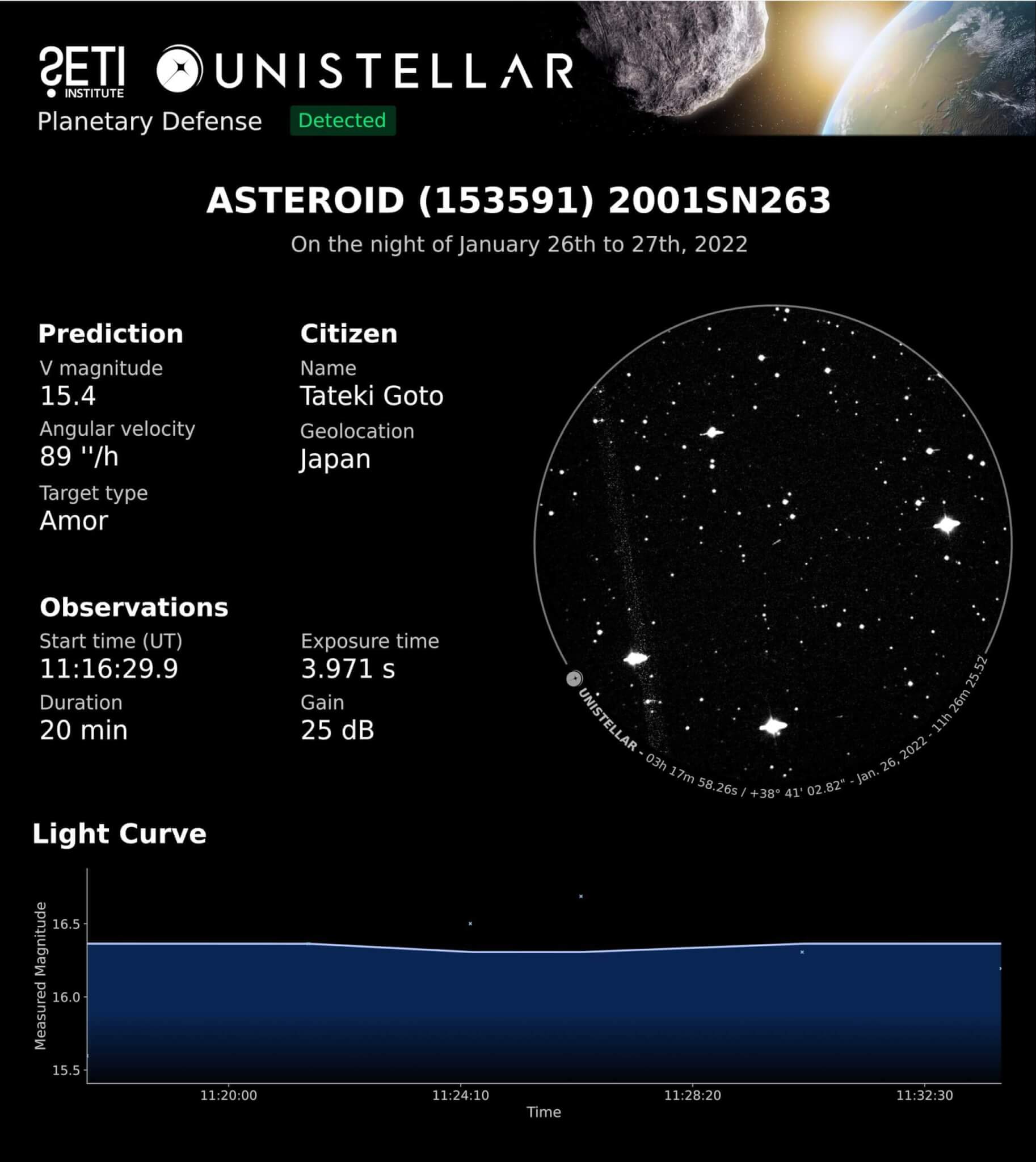
Information from Unistellar Ambassador Tateki Goto’s observation of 2001 SN263 on January 26, 2022.
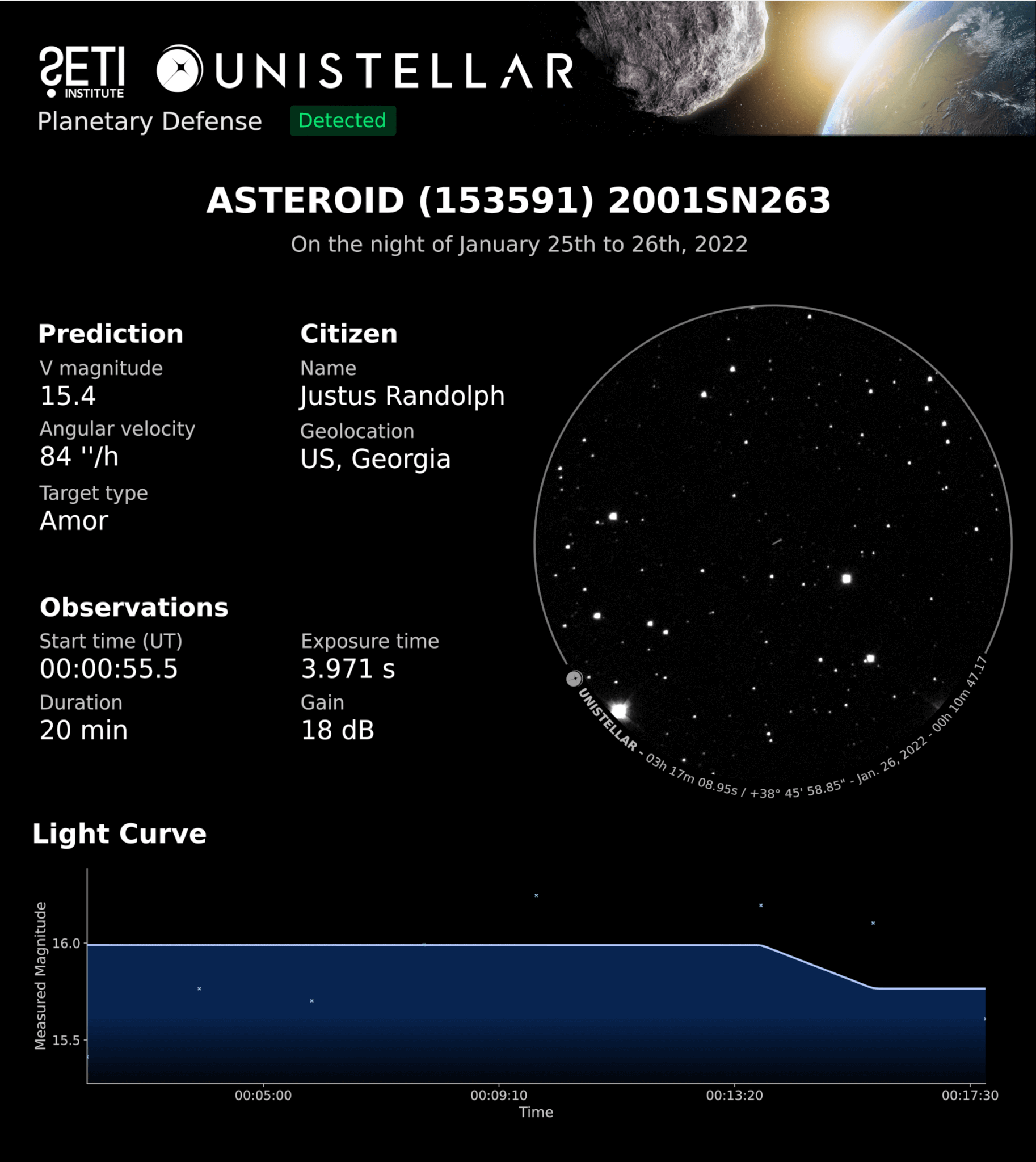
Information from Unistellar Ambassador Justus Randolph’s observation of 2001 SN263 on January 26, 2022.
Didymos was predicted to occult, or pass in front of, a star on September 20, six days before the DART impact. But the astronomers had to meet in the middle of the desert to see it. Two teams, each led by a SETI Institute scientist, arranged 12 eVscopes precisely 500 meters (1,640 feet) apart along the predicted occultation path in the Arabian desert, where dark skies provided clear viewing. Their goal was to catch the moment when a distant star’s light was blocked by the passing asteroid, a brief glimpse that nevertheless gives scientists valuable information about an asteroid’s size, speed and orbit.
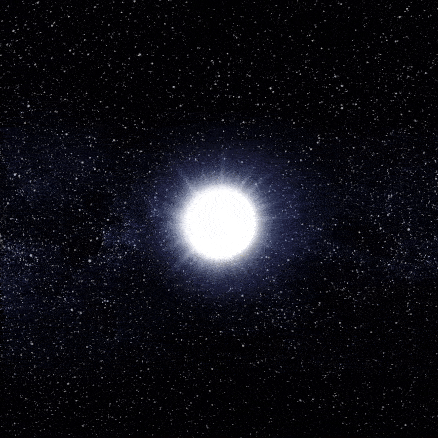
An asteroid occultation occurs when a nearby asteroid briefly blocks the light from a distant star.
So far, the Unistellar Network has made 18 observations of 2001 SN263. With more observations, we will be able to put together a 3D model of its shape combining our data with radar observations taken in 2008.
While you can see 2001 SN263 on any clear night through the end of March, the best time to make an observation will be when the Moon is at less than 50 percent illumination so the night sky is darker.
You can find more information on how to observe this near-Earth asteroid on our Planetary Defense Campaign page, including how to find it with your eVscope.
If you have any questions, please contact us at [email protected].
Further readings
3 Reasons to observe this month
Every month, discover three unmissable celestial events to observe with your Unistellar telescope.
Observing Eclipses on Jupiter: Cosmic Spectacles Through a Telescope
The latest Unistellar App Update, version V3.0, is now live. Explore a smooth stargazing experience !
Unistellar Community Included In Multiple Scientific Papers
Did you know Unistellar Citizen Astronomers are often cited in published scientific papers? Find out how you can contribute too!
What Are the Names of All the Full Moons in 2024?
Discover the enchanting names of the full moons in 2024. Delve into the unique character of each lunar spectacle and embrace the allure of the night sky.
New Unistellar App Update: Version 3.0
The latest Unistellar App Update, version V3.0, is now live. Explore a smooth stargazing experience !
What to Observe This November: Open Star Clusters and More
These Halloween deep-sky objects will add some light to those dark, spooky nights. Treats, tricks, and telescopes await!

